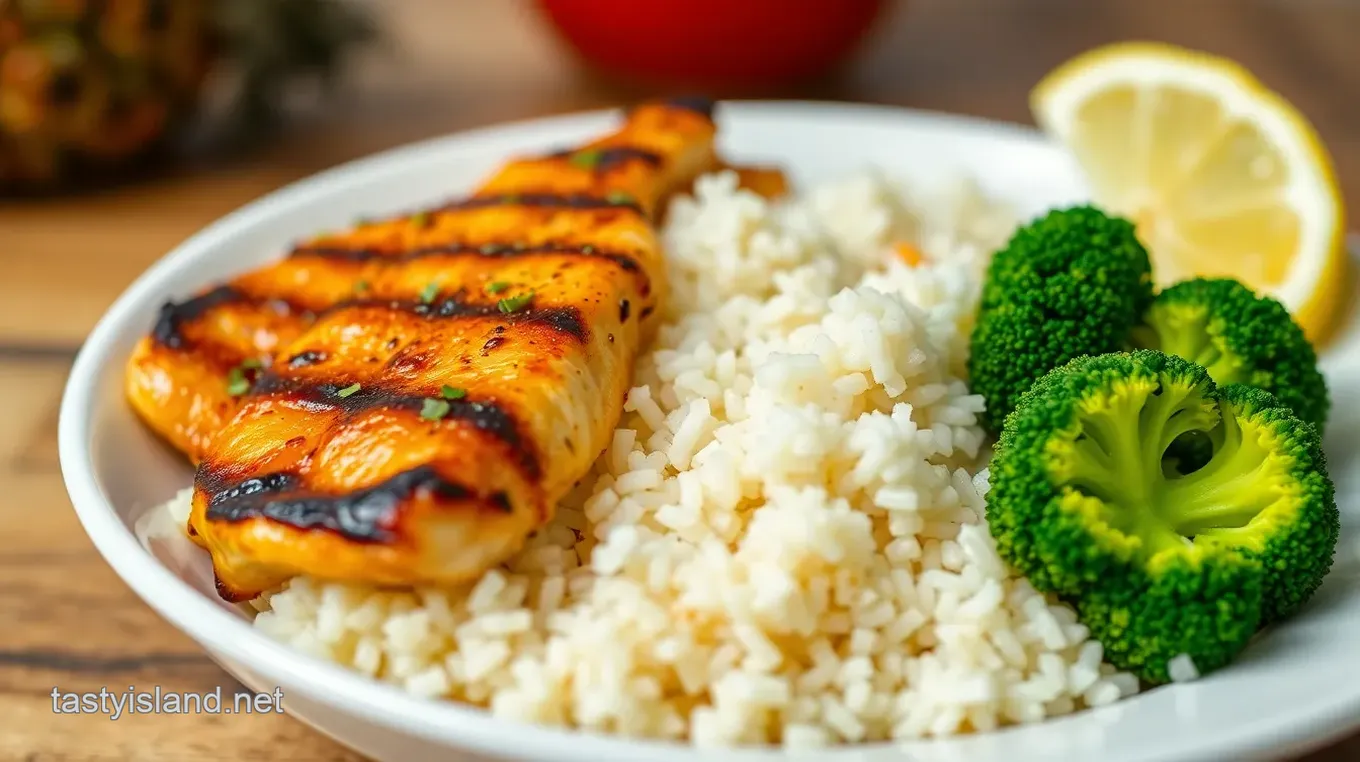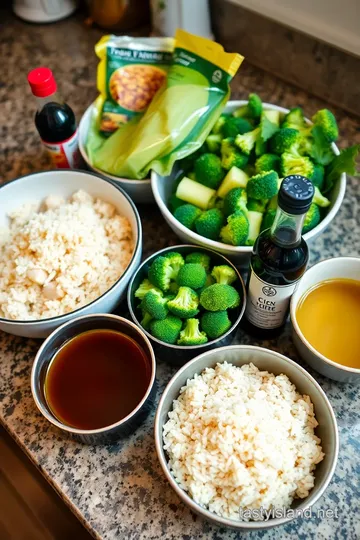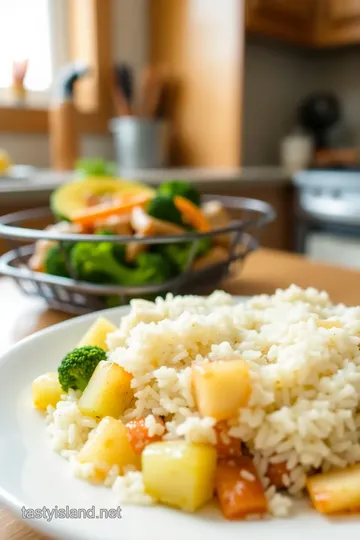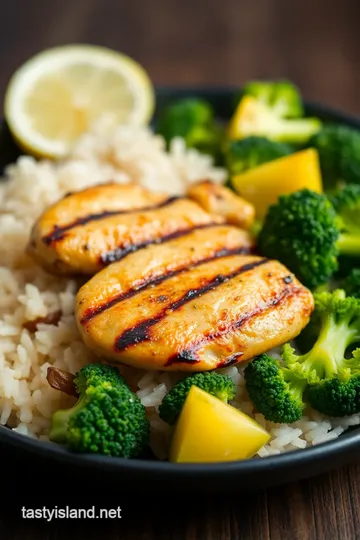Grilled Pineapple Sweet Tropical Delight
Craving something tropical? Try my grilled pineapple sweet tropical delight! With caramelized edges & a hint of coconut, it's a summer must-have.

look into into Flavor: Grilled Pineapple Sweet Tropical Delight
Oh my gosh! have you ever bitten into a slice of grilled pineapple and felt like you were on a beach in hawaii? the juicy sweetness and that smoky flavor just hit different, right? honestly, it’s one of those summer fruit recipes that i can’t get enough of.
Forget about boring desserts; this grilled pineapple sweet tropical delight gives you that amazing tropical vibe right from your backyard.
Let me take you through a journey of juicy goodness with some nostalgic stories along the way!
Tasting the Tropics: A Recipe Overview
Let’s talk about where this treat comes from. grilling fruit isn’t exactly new. it dates back to ancient times when folks in tropical regions discovered how heat could elevate the natural sweetness of fruits.
But in modern times? this dessert has made a big comeback—especially at summer bbqs and potlucks. it’s a real crowd-pleaser!
Now, you might be wondering how hard it is to whip this up. spoiler alert : it’s super easy! with just 15 minutes of prep and 10 minutes on the grill, you can serve it in around 25 minutes total.
Trust me; it’s so simple that even your cousin who once burned toast can nail it! and the costs? honestly, a ripe pineapple will only set you back around five bucks, and the rest of the ingredients are pantry staples.
So you can feed up to four people without breaking the bank.
Why You’ll Love it: Key Benefits
Okay, so can we chat about the health benefits for a sec? did you know pineapple nutrition facts are pretty impressive? it's packed with vitamin c, antioxidants, and the enzyme bromelain, which helps with digestion.
So, not only does it taste like pure joy, but it’s good for you too!
Beyond health, one of the notable features of this grilled fruit recipe is how versatile it is. you can serve it as a scrumptious pineapple side dish with grilled chicken or fish, or dress it up with some ice cream for an easy, yet exotic dessert recipe.
Ever tried it drizzled with a bit of coconut milk and shredded coconut? heaven ! and let’s not forget—it’s perfect for all those festive bbq recipes you’ll be hosting all summer long.
Plus, if you’re the one hosting, just imagine the oohs and aahs when you bring out this colorful dish. with caramelized edges and those sweet tropical flavors, this treat steals the show every time.
Making It Happen: Transitioning to Ingredients
So, are you ready to gather those brightly colored, super fresh ingredients? the recipe is straightforward, and i promise, you won’t be sorry.
Just imagine the delightful aroma of caramelized pineapple wafting through the air while you grill away. grab a fresh pineapple, unleash some coconut oil benefits, and get that grill heated up.
Trust me, you’ll want to take notes because this is a treat everyone will love.
Stay tuned for the list of ingredients and step-by-step guide, so you can recreate this refreshing summer treat in no time! whether it's a family cookout or a quiet evening at home, this recipe is sure to shine.
So let’s get to it and dive into those sweet tropical flavors!

Essential Ingredients Guide: Your Go-To for Grilling Deliciousness
Hey there, fellow food lovers! if you’re anything like me, you totally want to wow your friends with some killer dishes, like a grilled pineapple sweet tropical delight .
But to make that happen, you need to know your ingredients inside and out. so let’s break it down.
Premium Core Components
First things first—let’s talk measurements. for the grilled pineapple , if you’re gonna whip up that beauty, you’ll need a ripe pineapple (about 3 pounds or 1.
4 kg ) along with coconut oil, brown sugar , and cinnamon . in the kitchen, accuracy is key , but don’t stress! just remember these basic conversions: 2 tablespoons equals 30 ml , and 1 teaspoon is about 5 g .
Now, about the quality indicators —you want your pineapple to smell sweet and give just a little when you press on it.
And don’t forget to check the color; it should be that gorgeous golden yellow. your storage guidelines ? keep that pineapple on the counter if you plan to use it shortly, or toss it in the fridge to last a bit longer.
For freshness , use it within two to three days for the best flavor. If it's sitting in your kitchen, it's gonna lose that lovely taste we all love. Select wisely, friends!
Signature Seasoning Blend
Ah, the magic of spice blends! for your grilled fruit, i swear, a mix of cinnamon and brown sugar takes it to another level! if you’re feeling adventurous, add nutmeg, or even ginger for a warm kick.
When we talk about herbs, fresh mint pairs perfectly with pineapple, offering a refreshing contrast for those hot summer nights.
Plus, mint garnish ideas are always a hit!
Smart Substitutions
Life happens, right? so you might find yourself out of an ingredient. no worries! if you run out of coconut oil, you can easily swap it for unsalted butter or even another neutral oil like canola.
And if you’re keeping an eye on the sugar, feel free to substitute brown sugar with honey or maple syrup for a little sweetness .
If you’re cooking for someone with dietary restrictions, you can totally make adjustments here and there.
Kitchen Equipment Essentials
Alright, let’s talk tools! you don’t need a fancy kitchen to whip up the deliciousness we’re doing. just grab a grill , a basting brush , and a sharp knife .
Seriously, a simple grill pan will do the trick just fine! when preparing your ingredients, a well-sharpened knife is like gold to any home cook.
Make sure to clean up your space afterward too—an organized kitchen is a happy kitchen! if you’ve got leftovers, store them in an airtight container in the fridge to keep your grilled pineapple slices fresh and tasty.
Wrapping It All Together
So there you have it, a deep dive into what makes your grilled pineapple a tropical sensation. with these tips, you’re not just tossing fruit on the grill—you’re crafting a refreshing summer treat that’ll have everyone begging for more.
Ready to dive into those step-by-step instructions on how to actually grill this beauty? i can’t wait to share those with you! because trust me, once you start putting fresh fruit on the grill, you’ll never look at the bbq the same way again.
Let's make some summer magic happen!
Unlocking the Secrets of Professional Cooking: A look into into Grilled Pineapple Sweet Tropical Delight
Oh my gosh, have you ever slapped a slice of pineapple on the grill? if not, you are seriously missing out.
Grilled pineapple sweet tropical delight isn't just a fancy name; it's a flavor explosion waiting to dance on your taste buds! before we dive into that heavenly recipe, let’s talk about some essential professional cooking methods that can take your home kitchen game to the next level.
Essential Preparation Steps
First things first: mise en place ! this french term just means “everything in its place." gather all your ingredients before you start cooking.
For our pineapple delight, that means getting your pineapple, coconut oil, brown sugar, cinnamon, and lime juice ready. it saves time and makes the process smoother.
Honestly, nothing’s worse than hunting for the brown sugar when your pineapple is sizzling on the grill!
Now, let’s chat about time management . timing is everything. plan for 15 minutes of prep and then around 10 minutes of grilling.
Trust me, having a clear timeline helps you focus and avoids that last-minute panic.
Also, keep your workspace organized. Make a little station, and clean as you go. Not only does this keep things tidy, but it also minimizes accidents — because we definitely don’t want a surprise trip to the ER!
Safety first! Always keep a pair of kitchen mitts handy while grilling. And, maintain a safe distance from the flames. You’re cooking, not auditioning for a fire safety video, right?
Step-by-Step Process
Let’s break down the how-to .
- Cutting the Pineapple : Start with a ripe pineapple. Cut off the top and bottom so it stands sturdy. Then, slice off the skin and cut it into 1-inch thick rounds .
- Making the Marinade : Simply mix together 2 tablespoons of melted coconut oil , 2 tablespoons of brown sugar , 1 teaspoon of cinnamon , and 1 tablespoon of fresh lime juice .
- Marinating the Pineapple : Give those slices a generous brush with the marinade. Let them soak in that flavor for about 10 minutes .
- Preheating the Grill : This is critical for that charred goodness. Preheat to medium-high heat .
- Grilling : Toss those pineapple rings onto the grill! Cook for about 4- 5 minutes per side until you see those gorgeous grill marks and the fruit is tender.
Don’t forget to check for doneness! You want it caramelized but not mushy.
Expert Techniques
Now, if you want to take your grilled pineapple to the next level, let’s get into some pro tips.
Before grilling, really evaluate your temperature . A moderate temperature helps caramelize the sugars without turning your pineapple into a charred mess.
For quality checkpoints , focus on the grill marks. They should be pronounced but not burnt. If you see black patches appearing way too soon, adjust that heat!
And hey, here’s a quick troubleshooting tip: If your pineapple is not caramelizing, check your sugar. It might need a little more time on the grill at the right temperature.
Success Strategies
We all stumble once in a while. avoid common mistakes! over-cooking is a biggie — nobody likes mushy pineapple. keep an eye on it! if you're grilling for a crowd, use an easy and reliable method like make-ahead options .
You can grill a batch in advance during your cookout prep.
Quality assurance tips : Ask a taste-tester nearby (or just be brave and try it yourself). If it’s not sweet enough, maybe a drizzle of honey might save it!
To wrap this up nicely, imagine serving grilled pineapple slices alongside some grilled chicken or as a topping on a dessert.
It pairs beautifully with a scoop of vanilla ice cream for a nostalgic twist.
And that’s your rundown on the magic that happens in the kitchen! as you grill away, remember that cooking is all about having fun, learning, and really enjoying those tropical dessert ideas like grilled pineapple sweet tropical delight .
Additional Information
As you experiment, you might come up with your own twists. maybe you’ll cook up a coconut lime dessert or even variations using your favorite spices.
Enjoy the process and get creative — that’s where the joy of cooking really shines!

Additional Recipe Information
When it comes to the grilled pineapple sweet tropical delight , there's so much more than just throwing some pineapple on the grill.
Trust me, putting a little extra thought into the cooking process can really level up your tropical dessert game. let’s dive right in and get those grilling juices flowing!
Pro Tips & Secrets
First up, here are some pro tips straight from my kitchen! always pick a ripe pineapple . you’ll want one that smells sweet and gives a little when you press it.
Makes a world of difference, trust me.
Next, if you’re looking to save a little time while making this dish, prep your marinade ahead of time. you can mix those coconut oil, brown sugar, cinnamon, and lime juice together early in the day.
Then, allow the pineapple to soak in those flavors while you’re hanging out, maybe prepping for your summer bbq recipes .
Oh, and for real—don’t skip the marinating step! let those pineapple slices soak for at least 10 minutes . it’s simple, but this is where the magic happens.
The longer you marinate, the more pronounced the caramelized pineapple flavors will be. and hey, grilling them over medium heat ensures that the sugar won’t burn, giving you those gorgeous grill marks instead of charred bits.
Perfect Presentation
Now, let’s talk about presentation because we eat with our eyes first! for the ultimate wow factor, line the grill with fresh mint leaves before placing the grilled pineapple slices on top.
Seriously , it adds a vibrant burst of color and a refreshing aroma.
When you serve it, drizzle a little honey or melted chocolate over the top, and maybe throw on some lime wedges—it adds that zesty kick .
You can even toss on some grilled pineapple toppings like crushed nuts or shredded coconut for an extra texture that will wow your guests.
Storage & Make-Ahead
Planning ahead? this is where your kitchen skills will shine. to store, place your leftover grilled pineapple in an airtight container in the fridge.
It should stay fresh for about three to four days . if you want to preserve that tropical goodness longer, freeze them for about six months .
Just make sure to separate the slices with parchment paper so they don’t all stick together.
When you’re ready to eat, just reheat the slices on medium heat on the grill or in a skillet for a quick revival —they’ll be packed with flavor and it takes just a few minutes.
Pair them up with your favorite coconut lime dessert , and you’re in for a treat!
Creative Variations
Now, the world of grilled fruit recipes is so broad and exciting! don’t hesitate to get creative. swap out pineapple for other fruits like peaches or mangoes for a different tropical flavor combination .
If you’re watching your sugar intake, consider using less brown sugar, or substitute with honey. feeling adventurous? try adding in some spice! a sprinkle of cayenne can give it that nice sweet and spicy kick .
And for those of you who are plant-based, toss in seasonal twists like a drizzle of maple syrup over grilled mango slices. Trust me; it's life-changing!
Complete Nutrition Guide
While indulging in this tasty treat, let’s keep it real! pineapple is a fantastic source of vitamin c and manganese.
A single slice can contribute to your daily intake, so enjoy guilt-free while soaking in those pineapple nutrition facts . although it contains some sugars, the fiber from the fruit helps balance it out.
As for portion guidance, two slices should be plenty as a side dish for your grilled chicken or fish. Seriously, it pairs perfectly.
Expert FAQ Solutions
You might be wondering, "my grilled pineapple didn’t caramelize; what did i do wrong?" no worries! too high heat is usually the culprit.
Stick to medium heat and keep an eye on it—the sugar does its thing when it’s patient!
Once you try the Grilled Pineapple Sweet Tropical Delight , you’re gonna be hooked! It’s refreshing, sweet, and oh-so-easy to make.
I can’t wait for you to wow your friends with this stunning dessert this summer. so grab your grill, and let’s get cooking! remember, the grilled pineapple sweet tropical delight is not just a dish; it’s a celebration of flavors .
Happy grilling, folks!

Grilled Pineapple Sweet Tropical Delight Card

⚖️ Ingredients:
- 1 ripe pineapple (about 3 pounds or 1.4 kg)
- 2 tablespoons (30 mL) coconut oil, melted
- 2 tablespoons (30 g) brown sugar
- 1 teaspoon (5 g) cinnamon
- 1 tablespoon (15 mL) fresh lime juice
- Fresh mint leaves, for garnish
- Lime wedges, for serving
🥄 Instructions:
- Step 1: Cut off the top and bottom of the pineapple.
- Step 2: Stand the pineapple upright and slice off the skin, following the curve of the fruit.
- Step 3: Remove any remaining eyes (brown spots) and cut the pineapple into rings, around 1 inch thick.
- Step 4: In a small bowl, combine melted coconut oil, brown sugar, cinnamon, and lime juice. Mix well.
- Step 5: Place pineapple rings in a shallow dish and generously brush both sides with the marinade. Allow to sit for 10 minutes.
- Step 6: Preheat your grill or grill pan over medium-high heat.
- Step 7: Place the marinated pineapple on the grill, cooking for about 4-5 minutes on each side until tender with grill marks.
- Step 8: Remove from the grill and allow to cool slightly. Garnish with fresh mint leaves and lime wedges if desired.
Previous Recipe: Easy Grilled Chicken Tasty Bowl with Fresh Veggies: A Delicious Family Favorite!
Next Recipe: How to Make the Best Stir-Fry Rice with Veggies & Tomatoes: 5 Delicious Tips!
